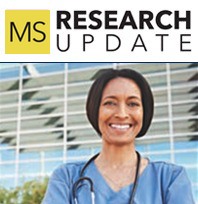Stem-Cell Therapy
New Directions in MS Research: New Therapeutic Approaches
Previous: Lipoic Acid | Next: Genetics
In a preliminary study, researchers found that a stem-cell transplant process using a relatively mild version of chemotherapy was more effective than disease-modifying therapies (DMTs) in slowing the progression of relapsing-remitting multiple sclerosis (RRMS).
In preparing participants for stem-cell transplantation, physicians generally administer high-dose chemotherapy, radiation, or both to kill cells in the bone marrow so that the transplanted stem cells can then “re-set” the body’s immune system. This “myeloablative conditioning” can cause severe side effects. In an attempt to enable patients to benefit from stem-cell transplants while facing fewer side effects, researchers have experimented with myeloablativeconditioning approaches that use less-toxic chemotherapy regimens. These approaches usually are referred to as “mini-transplant” strategies.
An international team of researchers recently pursued such a strategy in a study that involved 110 individuals with RRMS who had experienced at least two relapses while receiving a DMT in the prior year. These participants were randomized to either switch to another DMT believed to be more effective than their initial therapy or to undergo hematopoietic stem-cell transplantation (HSCT). Hematopoietic stem cells are immature blood cells that can grow into white blood cells, which fight infection; red blood cells, which carry oxygen; or platelets, which aid in the clotting process. The 55 patients in the HSCT group received 200 mg/kg of cyclophosphamide, a chemotherapy that suppresses the immune system; and antithymocyte globulin, which is used to prevent the body from rejecting transplanted cells. This regimen is milder than the chemotherapy that traditionally has been used in HSCT patients.
While some participants left the trial, 98 were evaluated at one year and 23 were evaluated each year for five years. The average follow-up period was 2.8 years. As measured by Expanded Disability Status Scale (EDSS) scores, three patients in the HSCT group had disease progression, as compared with 34 patients in the DMT group. The median time to progression could not be measured in the HSCT group because there were too few events to allow for a calculation. In the DMT group, the median time to progression was 24 months. During the first year, the average EDSS score in the HSCT group improved from 3.38 to 2.26 (a lower score reflects less disability), and worsened from 3.31 to 3.89 in the DMT group.
No deaths occurred among the participants in the study, and no individuals who received HSCT developed serious (Grade 4) adverse events in other organ systems or tissues.97 The researchers conducting the trial noted that it was a preliminary study, and that further research is needed to replicate its favorable findings and assess long-term outcomes and safety.
As researchers have explored the viability of stem-cell transplantation as a therapy in MS and other conditions, the side effects associated with traditional myeloablative conditioning have been a significant concern. If subsequent trials confirm this preliminary study’s findings that patients can receive a milder form of chemotherapy while enjoying significant reduction in disease progression with HSCT, it will constitute a major step forward in the effort to make stem-cell transplantation a mainstream treatment for RRMS.
Another study examined the effectiveness and safety of HSCT as initial treatment for RRMS in individuals experiencing “aggressive” disease. The study involved 20 patients from five centers in Europe and North America. The individuals’ median age at diagnosis was 33 years, and their median pre-treatment EDSS score was 6.5, indicating significant disability. None had received any standard DMTs for more than three months before undergoing a chemotherapy conditioning regimen and autologous HSCT (AHSCT). “Autologous” refers to using each patient’s own stem cells, which had been removed prior to the conditioning regimen and then transplanted back into each of the patients.
After a median follow-up period of 30 months, median EDSS score was 2.0 (as compared with 6.5 prior to treatment). No participants experienced a clinical relapse following AHSCT. Three of the study subjects had new T2 lesions at their first follow-up MRI, but no new or enhancing lesions were seen on subsequent scans. Researchers reported that participants had routine side effects associated with AHSCT, but no treatment-related deaths.
The investigators concluded, “AHSCT was safe and highly effective in inducing rapid and sustained remission in this cohort and was associated with a significant improvement in patients’ level of disability. This demonstrates the potential role of AHSCT as first line therapy in ‘aggressive’ MS.” 98
Meanwhile, another study is examining the effectiveness and safety of a therapy that would use patients’ own stem cells to treat progressive MS. In December 2018, the FDA approved an application from BrainStorm Cell Therapeutics to conduct a Phase II clinical trial of NurOwn® mesenchymal stem cell-neurotrophic factors (MSC-NTF) cells.99 The trial has an estimated primary completion date of February 2020 and full completion date of September 2020.100
The trial will involve 20 people with progressive MS, and will be conducted at multiple locations.100 Participants’ mesenchymal stem cells will be removed from their bone marrow via insertion of a hollow needle. Those cells then will be converted into MSC-NTF cells by growing them under patented conditions that cause the cells to secrete high levels of neurotrophic factors, molecules that support the development and differentiation of neurons.99 The MSC-NTF cells will be re-introduced into the patients’ bodies through three intrathecal cell transplantations over 16 weeks.100 Autologous (meaning from the patient’s own body) MSC-NTF cells can deliver neurotrophic factors and other immune-modulating molecules “directly to the site of damage to elicit a desired biological effect and ultimately slow or stabilize disease,” BrainStorm Cell Therapeutics explained in outlining the rationale for the treatment.99
Participants will be followed for 28 weeks after the start of treatment. Researchers will monitor these individuals for adverse events and will assess change from baseline to 28 weeks post-treatment in patients’ 25-foot walking speed. Sixteen weeks after treatment, researchers will analyze participants’ cerebrospinal fluid (CSF) to determine how many patients had changes in neurotrophic factors in their CSF.100

